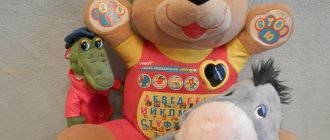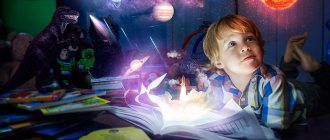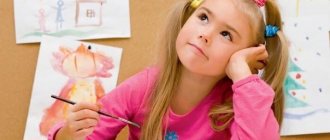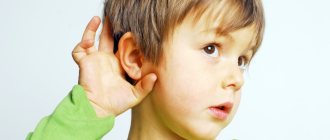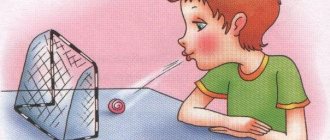Children's imagination and the importance of its development
The ability to imagine and imagine is formed on the basis of activity. Playing, drawing, modeling are based on the fact that you need to depict something or someone.
Imagination as a mental process consists in transferring the function of one object to another, in the ability to imagine a holistic image, relying on a limited number of details.
The imagination of a preschooler differs from the same function in an adult. This is due to the smaller number of frames that are imposed on fantasy in preschool age.
The peculiarities of a preschooler's imagination are that it is easy for a child to move away from reality in order to explain an incomprehensible fact or phenomenon. This is the cement that fills the gaps in knowledge that still exist and helps to better understand the world. If a preschooler has already heard that astronauts fly in a rocket, then he will be interested in the flight itself. How the space flight goes will be completed by your imagination.
By imagining, children expand the boundaries of their own existence. A child can become a pirate, a beautiful princess, attend a ball or endure a catastrophic storm. He does not care whether this actually happens, but is fascinated by the process of fantasy. Even fictional experiences enrich the moral and emotional experience.
On the other hand, preschoolers' fictional images are rather schematic and stereotypical. They endow imaginary characters with typical traits borrowed from familiar stories and fairy tales. The development of imagination in children requires filling the imaginative reserve and mastering new ways of transforming material and impressions.
Imagination and cognitive processes
Imagination is a cognitive process, the specificity of which is the processing of past experience.
The relationship between imagination and organic processes is most clearly manifested in the following phenomena: ideomotor act and psychosomatic disease. Based on the connection between human images and his organic states, the theory and practice of psychotherapeutic influences is built. Imagination is inextricably linked with thinking. According to L. S. Vygotsky, it is permissible to say about the unity of these two processes.
Both thinking and imagination arise in a problem situation and are motivated by the needs of the individual. The basis of both processes is advanced reflection. Depending on the situation, the amount of time, the level of knowledge and its organization, the same problem can be solved both with the help of imagination and with the help of thinking. The difference is that the reflection of reality, carried out in the process of imagination, occurs in the form of vivid ideas, while the advanced reflection in the processes of thinking occurs by operating with concepts that allow us to comprehend the environment in a generalized and indirect way. The use of a particular process is dictated, first of all, by the situation: creative imagination works mainly at that stage of cognition when the uncertainty of the situation is quite great. Thus, imagination allows you to make decisions even with incomplete knowledge.
In its activity, the imagination uses traces of past perceptions, impressions, ideas, that is, traces of memory (engrams). The genetic relationship between memory and imagination is expressed in the unity of the analytical-synthetic processes that form their basis. The fundamental difference between memory and imagination is revealed in the different direction of the processes of active operation with images. Thus, the main tendency of memory is to restore a system of images that is as close as possible to the situation that took place in experience. Imagination, on the contrary, is characterized by the desire for the maximum possible transformation of the original figurative material.
Imagination is included in perception, influences the creation of images of perceived objects and, at the same time, itself depends on perception. According to Ilyenkov’s ideas, the main function of imagination is the transformation of an optical phenomenon, consisting of irritation of the surface of the retina by light waves, into the image of an external thing.
Imagination is closely related to the emotional sphere. This connection is dual in nature: on the one hand, an image can evoke strong feelings, on the other, an emotion or feeling that once arises can cause active imagination. This system is discussed in detail by L. S. Vygotsky in his work “Psychology of Art”. The main conclusions he comes to can be stated as follows. According to the law of the reality of feelings, “all our fantastic and unreal experiences, in essence, proceed on a completely real emotional basis.” Based on this, Vygotsky concludes that fantasy is the central expression of emotional reaction. According to the law of unipolar energy expenditure, nervous energy tends to be wasted at one pole - either at the center or at the periphery; any increase in energy expenditure at one pole immediately entails its weakening at the other. Thus, with the intensification and complexity of fantasy as the central moment of the emotional reaction, its peripheral side (external manifestation) is delayed in time and weakens in intensity. Thus, imagination allows you to gain a variety of experiences while remaining within the framework of socially acceptable behavior. Everyone gets the opportunity to work through excessive emotional stress, discharging it with the help of fantasies, and thus compensating for unmet needs.
Types and functions of a child’s imagination
In psychology, a distinction is made between cognitive and emotional childhood imagination. The emotional is aimed at regulating the feelings experienced and the formation of the personal Self, and the cognitive contributes to the understanding of the surrounding reality.
Both types are involved involuntarily in early preschool age. Only by the age of 6 does a child learn to deliberately come up with a plan in order to consistently implement it.
Involuntary
Adults are often amazed at children's free imaginations and are puzzled why the child cannot or does not want to fantasize on a given topic. But before the age of 5, the reasons are exclusively objective - the youngest preschooler does not yet know how to control his imagination.
Involuntary imagination is characterized by the fact that the idea arises spontaneously and is associated with objects, stories or incidents that surprised and excited the child. It could be a fairy tale story or a cartoon character, a bright toy or an unusual event.
Imagination seems to lead the child’s thoughts along with it, giving him ideas for creating an image. Its main feature in early preschool age is the lack of control over the process.
free
Elements of arbitrariness appear upon reaching the age of five. Voluntary imagination is also called active imagination.
Often the trigger is the task at hand: for example, performing the actions of your hero in role-playing games. To portray a cowboy, an astronaut or Malvina, the imagination has to work in full force - after all, the role must be depicted as accurately as possible.
You should not wait for a preschooler to awaken the ability to purposefully use his imagination. The adult’s task is to encourage the child to come up with images.
You can remember and discuss a children's work together, pay attention to individual characters, and consider options for creating an image.
Within the framework of arbitrary imagination, there are 3 types:
- Recreating - the task is to imagine the child followed by a description of an object or item that he did not see. Example: a non-existent animal, a resident of Mars or the Moon.
- Creative imagination - a preschooler creates new images based on personal perception, moving away from known patterns and pushing boundaries.
- Dreams - from a child’s fantasies of what he will receive for his birthday to ideas of what he will become when he grows up.
Cognitive function
Imagination performs two important functions. Cognitive ensures the elimination of “blind spots”. A child’s mind has already formed a certain idea of the world around him, but many gaps have not yet been filled. The ability to operate with images “fills” these spots and helps to obtain yet unknown impressions.
In addition, imagination helps explain the meaning of a person’s actions if, due to his age, the baby does not understand why someone is crying, laughing or doing something incomprehensible.
The older the preschooler, the more he takes into account natural patterns in his fantasies. It is important for him to come up with images in which, along with fantastic qualities, there would be real characteristics.
Affective function
The affective function of the preschooler’s imagination is aimed at upholding and protecting one’s own self. The relationship between anxiety and imagination helps to avoid injury.
Emotional fixation on certain experiences unconsciously pushes the child to simulate a situation that is significant to him in one of the ways known to him:
1. An impact or situation that has a negative impact on the psyche is repeatedly played out. Numerous repetitions help to distance yourself from the event itself and turn from a participant into an observer.
2. If necessary, the child creates situations in which he feels like a hero. He puts himself in the shoes of numerous superheroes and saves worlds with a sense of agility, courage and power. Frequent repetitions of situations with victories and successes help a preschooler increase self-esteem.
Origin
Imagination is inextricably linked with creative thinking. The formation of images and ideas in thoughts is a process of creative activity, i.e. creating something new from previous experience. This means that it relies on perception and memory. How then do children invent images in their games without previous experience? “They are not born without reason, but are a product of processing all previously received information. A word heard or an image seen is fixed in the child’s mind and associated with other information, creating a complete picture. A person’s imagination is formed in several stages.
Features of imagination development in preschool age
Unlike other cognitive processes, imagination awakens at about 3 years of age. Over about five years, a child goes through several stages of imagination development: from the simplest ideas based on a toy and an object to conscious, planned fantasy. Images, roles and plots are gradually becoming more detailed and meaningful.
How children 3-4 years old imagine
Activities related to invention become more active at the age of 3 and are based on objects that become the basis for fantasy.
At first, it is important that the “anchor” object resembles the fictional object. But the idea of children's play is unstable. As soon as the child is distracted, he no longer remembers what roles the surrounding objects just played.
At this age, the intention often appears after the action. For example, a baby may chaotically draw on a piece of paper or fold cubes, getting carried away by the process itself. And only a question asked by his parents prompts him to name what he drew or built.
Characteristics of the imagination of five-year-olds
By the age of 5, fantasies do not only arise spontaneously. The work of imagination can already be built step by step: a plan appears - the preschooler immediately implements it, the next step is often carried out on the basis of the previous one.
A saucepan left on the stove encourages you to start playing chef, a mother’s light robe turns the baby into a doctor, and scales are a great reason to make a shop in the room.
A child of middle preschool age uses reproductive imagination in play: he strives to reproduce reality as it actually is.
Also, this age is a period for the rapid growth of the verbal form of imagination. Seeing the picture, the preschooler will come up with a story about what is happening in it now. But sometimes the captured moment is not enough: the imagination suggests what happened “before” and “after”. This requires new characters to be introduced into the narrative to create a coherent story about the characters drawn.
Such completion usually occurs if the child is excited by the image. His imagination seeks to calm this excitement by creating a full-fledged fairy tale, where there are good characters, and maybe antagonists.
Features of imagination in older preschoolers
6-7 years is a period of active development of imagination in children of senior preschool age. Any external support is enough, that is, a word, a film, a picture, a view on the street, for the imagination to work. An idea is formed that can hold attention for several days.
A preschooler is able to independently invent a game, placing the scene in any reality or time. He and his friends are given roles, but the difference from adult theater is that in the game the plot and actions are constantly changing under the influence of new decisions.
Initially, the general idea is overgrown with details, and any external factor is an incentive for the appearance of side lines in the plot and the emergence of new characters. An imaginary world is an excellent playground, and older preschoolers can immerse themselves in it, gradually adding content, drawing the necessary details and features of the imaginary nature and local population.
It is during this period that fairly stable dreams appear, the basis is laid for the development of preschoolers’ creative abilities and the desire to think outside the box.
Classification of imagination processes
1.According to the results:
- Reproductive imagination (recreating reality as it is)
- Productive (creative) imagination: with relative novelty of images;
- with absolute novelty of images.
2.According to the degree of focus:
- active (voluntary) - includes reconstructive and creative imagination;
- passive (involuntary) - involves unintentional and unpredictable imagination.
3.By type of images:
- specific;
- abstract.
4. By methods of imagination:
agglutination - the connection of objects and properties that are incompatible in reality; hyperbolization - an increase in the object, its parts and the intensity of properties; substitution - replacing an object, process or parts with others that are somewhat similar; concentration (concentrating integration) - complete or significant inclusion of some parts into others, including through combination, “fusion”, “dissolution”; integration - in technology, combining into one coherent whole objects (assemblies, mechanisms) that have a relatively independent purpose; miniaturization - reduction of an object, its parts and the intensity of properties
A technique for creating a new mental image, the opposite of hyperbolization; dismemberment and elimination - analysis, division of the whole into parts and with the removal of some of them; transfer (heuristic transduction) - transfer of parts, processes from one integral system to another; permutation - moving parts of a whole to other places, including with a change in interaction; regeneration - completion of missing, removed one or more parts; imparting resemblance, similarity in form, material, structure, operating principle, for example, of technical devices to living beings; opposition is a technique for transforming ideas, consisting in a conscious search and use of phenomena, processes, objects that have properties opposite to the original image; reintegration - completion of one main, important part or process into a whole; schematization - highlighting differences and identifying similarities; typification - highlighting the essential, repeating in homogeneous phenomena; transformation - transformation of the external form.. 5. According to the degree of volitional effort:
5.According to the degree of volitional effort:
- deliberate;
- unintentional.
Stages and techniques for developing a child’s imagination
Despite the fact that a child’s imagination develops involuntarily, it is possible and necessary to speed up this process. For this, it is important to have emotionally charged communication with adults and various techniques that are systematically used by educators and parents.
Observation of the surrounding world and its phenomena
The world around us provides enormous food for the imagination. When observing nature, you must first use the method of comparison. What does a leaf look like? And the snowflake? Cloud? What does that distant tree resemble?
If you start such activities at an early age, then you first need the help of adults. Subsequently, the child himself begins to see new phenomena in familiar natural objects and even invent short stories about a cloud or a leaf floating down a stream.
Listening to fairy tales and stories
Stories and fairy tales are the main method for developing children's imagination. The fictional story itself becomes the basis, the impetus for fantasy:
- They talk about ancient times and ancient cultural customs.
- Listening to the story, the child involuntarily expands his personal experience.
- When playing out a magical story, opportunities are revealed for activating memory, developing speech and creative thinking.
- Children put themselves in the shoes of the characters and come up with new solutions to overcome difficulties.
Developing imagination through stories and fairy tales occurs through listening to stories, retellings, discussions and drama.
Children's educational games
Games used to develop this function are divided into 3 types:
- using objects;
- using pictures and illustrations;
- verbal.
The first type helps children play and interact with the help of dolls, cars, and sets of objects. Each game assumes the presence of a game plan and constant development of the plot, the latter being achieved through children's imagination. “Let’s do it better this way...”
Using picture cards encourages you to create stories based on a specific scene.
Verbal games involve targeted influences from the teacher, encouraging children to communicate, reason, and exchange thoughts and opinions on a given topic.
Creative activities
For preschoolers, the main manifestations of creativity are expressed in drawing or design. If at first the images on paper copy the drawing of an adult, then gradually everything that fantasy suggests is reproduced on the sheet: new worlds, stories from reality, various characters.
Drawing helps develop imagination and creativity, expanding the boundaries of imagination.
Construction also allows the preschooler to feel like a creator. Having mastered the creation of models according to the scheme, he is able to formulate an idea for an unprecedented transport or castle and bring it to life using existing parts or molded from plasticine.
Development of children's spatial imagination
From an early age, a child is faced with the need to navigate in space. With the help of adults, he learns the simplest ideas about this: left, right, above, below, in the center, above, below, between, clockwise, counterclockwise, in the same direction, in the opposite direction, etc.
Preschoolers are given the necessary primary information, and then the task is set: “What will happen if...”. The conditions under which the action must occur are formulated. The child must comprehend the data received, understand the task and make the right decision in the form of an oral or written answer.
The influence of fairy tales on the development of a preschooler’s imagination
A fairy tale is the main tool for developing imagination. Thousands of imaginary magical stories trigger mental processes that allow you to create new images and expand the boundaries of existing reality. A fairy tale can be compared to instructions in colorful packaging. By listening and retelling, children receive ready-made examples, as well as new ideas and means for imagination.
Development of imaginative thinking and fantasy
To develop imaginative thinking and imagination, just listening to a fairy tale is not enough.
Although children with particularly developed imaginations automatically begin to develop the story.
An effective method is games with the task: “What would happen if...”
In such exercises, children, based on an existing plot, learn to come up with new developments of events and whole series of stories that are distinguished by their originality, although initially the bun simply ran away from their grandmother and was eaten by a sly fox.
The formation of a child’s affective imagination
The affective function of the imagination is aimed at the need to protect oneself from the traumatic facts of reality. In this case, the fairy tale performs important functions:
- The opportunity to immerse yourself in history, distracting yourself from real events and putting yourself in the place of the main and successful hero.
- A magical story with a similar plot allows you to turn into an observer and adopt some ways of behavior and expression of emotions. For example, the story of Cinderella can help cope with a similar situation in the family.
- An opportunity to experience feelings of fear or guilt in a safe environment while listening to and discussing a fairy tale story.
The instructive meaning of fascinating fairy tales is a valid example to follow. Researchers have already proven that if you tell children two different examples - successful and unsuccessful - then almost every child will prefer to use the successful one. This fact further enhances the value of fairy tales in the development of a preschooler.
With the activation of imagination, the development of cognitive processes receives new stimuli. Children can imagine a lot, which activates the work of thinking and memory. Using various techniques to develop imagination in preschoolers, educators and parents promote the harmonious development of personality.
Classification of types of imagination:
- Active (voluntary) - the deliberate construction of images with a consciously set task in a particular type of activity, develops in the process of labor.
- Passive (involuntary) - the emergence of new ideas when conscious control on the part of the individual is weakened and without his direct intention.
Active imagination
Voluntary imagination develops from childhood, when children try on certain roles in games. The need for the most accurate representation of the role leads to active work of the imagination. It continues to develop in further human activity, when in order to complete a particular task he needs to present the result of the work, as well as the necessary operations.
In the process of active imagination, a person’s awareness and his active attitude to the formation and transformation of images play an important role. The basis of such activity is the ability to evoke and change the necessary ideas.
Tasks of active imagination:
- Conveying reality through fantasy - reproducing the phenomena seen, remembering them, transforming reality.
- Regulation of behavior - predicting a program of action, adjusting behavior in accordance with the goal, establishing a relationship between activity and its results.
- Managing emotions - relieving tension through calming images.
In the active imagination group, the following subtypes are distinguished:
- productive (creative);
- reproductive (recreating);
- dream.
Productive (creative) imagination
This type is responsible for the formation of ideas that have no prototypes in the real world. A model of a certain situation, phenomenon or object is formed in a person’s mind based on life experience and knowledge. The difficulty lies in combining the existing elements into a single whole, thereby creating the uniqueness of the final image.
Productive imagination manifests itself in the process of human creativity: art, science, technical activity.
Reproductive (recreative) imagination
In the course of reproductive imagination, new images arise based on the perception of descriptions, diagrams, drawings, and records. The goal of this type of imagination is to create an image as close to reality as possible.
Recreating imagination plays an important role in learning, allowing you to understand the essence of what is being studied through the images created.
Dream
It is a special form of active imagination, which consists of creating an image of what a person would like to accomplish. A dream is aimed at the future and acts as a reason, a motive for a particular human activity.
Passive imagination
Involuntary imagination begins to emerge in young children. It is most vivid in dreams, in a half-asleep state, when ideas arise, change, and combine spontaneously. However, passive imagination also occurs in the waking state.
Passive imagination manifests itself in two subtypes:
- intentional (dreams);
- unintentional.
Intentional imagination (daydreams)
Creating images that are initially perceived by a person as impracticable and unrealistic. Dreams usually occur in a person with weakened control of consciousness. In this case, control is manifested in the selection of images that would evoke a certain emotional state in a person.
Unintentional imagination
It appears in special states of the individual or organism, when a person does not control the process of creating images. Varieties are dreams and hallucinations.
Dreams - images that arise in a person during the REM sleep phase, represent the creation of new images as a result of a combination of information from long-term memory, as well as information received during the day.
During hallucinations, the image appears without a real external stimulus. The specificity is that this image is assessed by a person without criticism, as a truly existing object. The causes of hallucinations can be both organic factors (exposure to drugs, alcohol, temperature, lack of oxygen) and psychogenic (state of passion).

